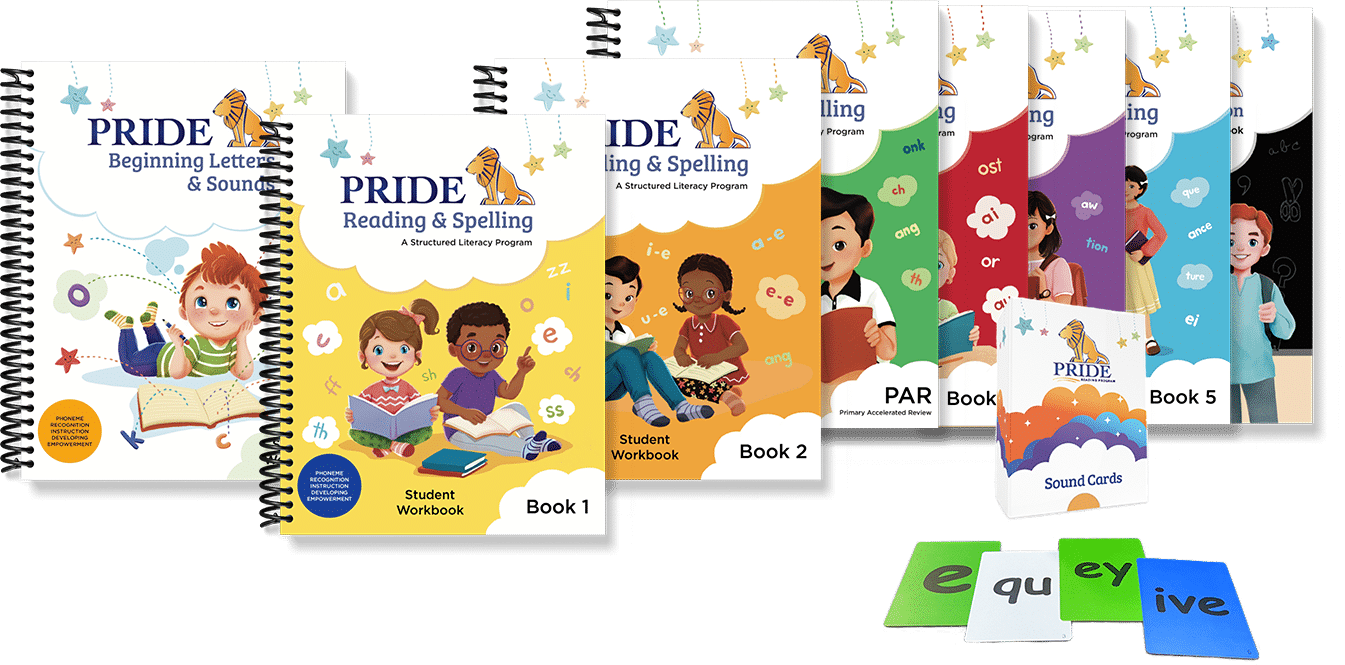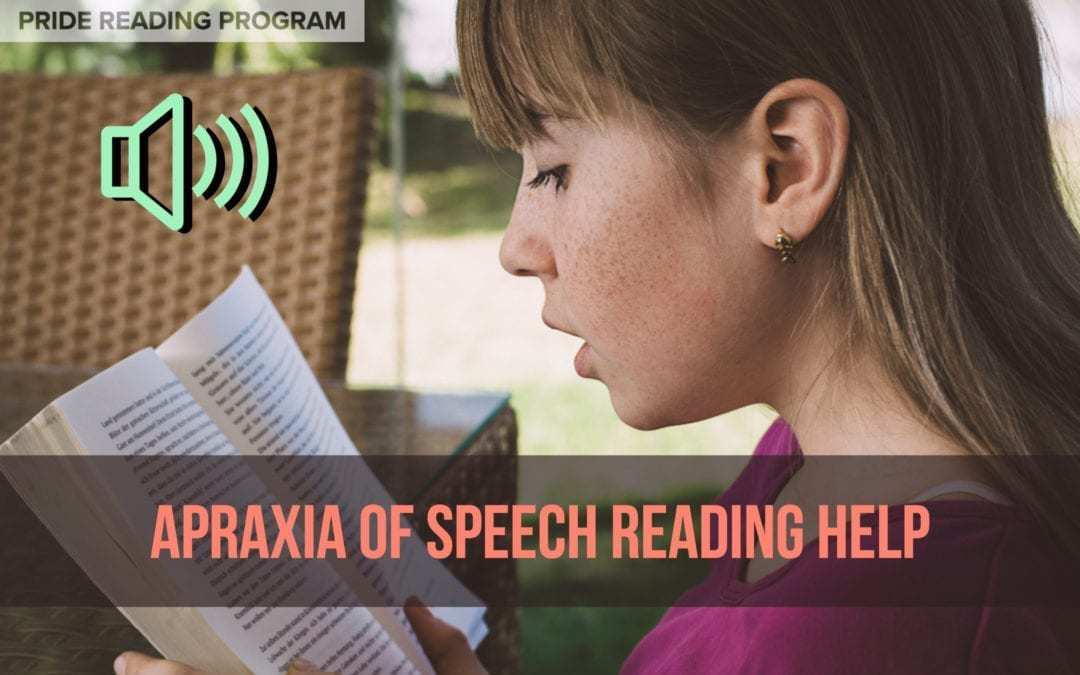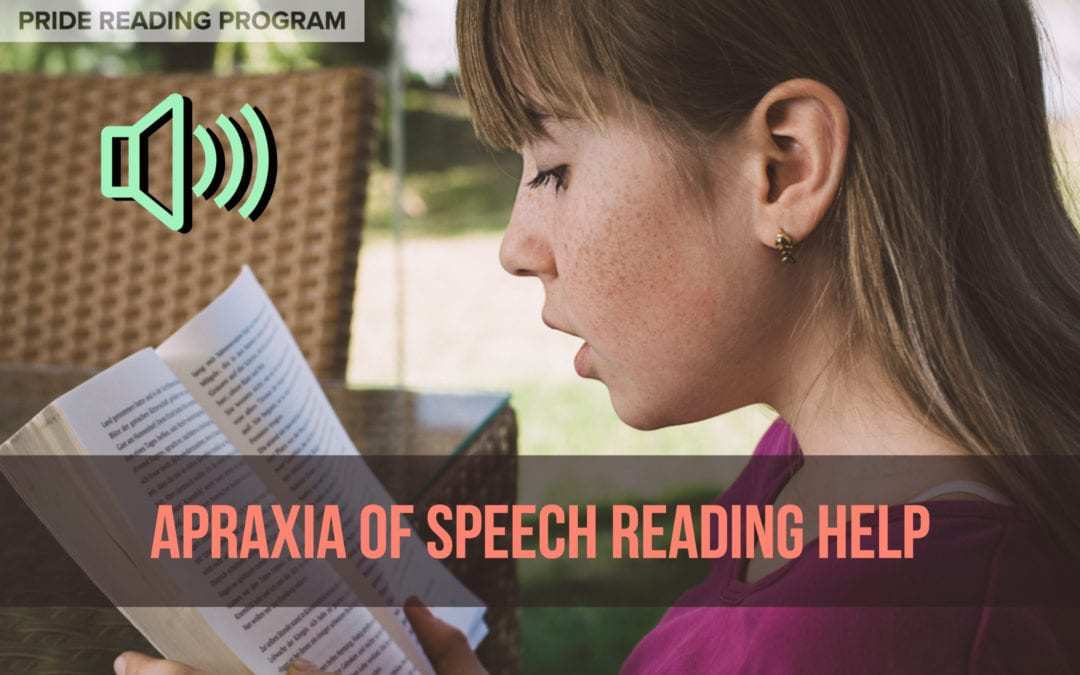Children diagnosed with Apraxia of Speech often struggle with reading and comprehension. This is because if your child is having difficulties saying the sounds, they will also have difficulties reading the sounds. If your child with apraxia of speech is struggling with reading, this post is for you! I am going to share with you all of the resources, tips, and strategies you will need to help your child with apraxia of speech become a reader!
How Does a Child with Apraxia
of Speech Learn to Read?
A child with Apraxia of Speech will learn to read with a multisensory, structured, systematic, cumulative, and repetitive reading program plus intensive therapy in phonemic awareness and phonological processing!
Multisensory
See it – Say it – Move with it – Touch it!
Learning to read with a Multisensory approach is an important aspect of instruction for a child with Apraxia of Speech. Multisensory instruction utilizes all the senses to relay information to the child. The child is then able to access the auditory, visual, and kinesthetic pathways in order to enhance memory and learning.
Links are consistently made between the visual (language we see), auditory (language we hear), and kinesthetic-tactile (language we feel) pathways in learning to read. For example, when learning the letter combination “ong” the child might first look at it and then have to trace the letters in the air while speaking out loud.
This combination of listening, looking, and moving around creates a lasting impression for the child as things will connect to each other and become memorable.
The Orton-Gillingham Approach
The most significant component in helping a child with Apraxia of Speech learn to read is utilizing an Orton-Gillingham approach. In Orton-Gillingham, the phonemes are introduced in a systematic, sequential, and cumulative process.
The Orton-Gillingham lesson begins with the most basic elements of the English language. Using repetition and the sequential building blocks of our language, phonemes are taught one at a time. This includes the consonants and sounds of the consonants. By presenting one rule at a time and practicing it until the child can apply it with automaticity and fluency, the child will have no reading gaps in their word-decoding skills. As the child progresses to short vowels, he or she begins reading and writing sounds in isolation. From there the child progresses to digraphs, blends, and diphthongs.
Children are taught how to listen to words or syllables and break them into individual phonemes. They also take individual sounds and blend them into words, change the sounds in the words, delete sounds, and compare sounds.
You can watch an Orton-Gillingham Lesson here on this video that I made for you:
Phonological Processing
The key to the entire reading process is phonological awareness. This is where a child identifies the different sounds that make words and associates these sounds with written words. A child cannot learn to read without this skill.
In order to learn to read, children must be aware and able to sound out each of the phonemes in the English language. A phoneme is the smallest functional unit of sound. For example, the word ‘bench’ contains 4 different phonemes. They are ‘b’ ‘e’ ‘n’ and ‘ch.’
Through phonological awareness, children learn to associate sounds and create links to word recognition and decoding skills necessary for reading. Research clearly shows that phoneme awareness performance is a strong predictor of long-term reading and spelling success for children with speech and language disabilities. In fact, according to the International Reading Association, phonemic awareness abilities in kindergarten (or in that age range) appear to be the best single predictor of successful reading acquisition!
What kind of reading intervention is necessary?
For the child diagnosed with Apraxia of Speech who is already behind his peers in phonemic awareness and reading, the instruction will need to be delivered with great intensity. Keep in mind that this child is behind his classmates and must make more progress if he/she wants to catch up. The rest of the class does not stand still to wait, they continue forward. Taking a few lessons once or twice a week will never give the student with CAS the opportunity to catch up. A giant leap must be made; if not, that child will always remain behind.
In general, it takes 100 hours of intensive instruction to progress one year in reading level. The sooner this remediation is completed, the sooner the child can progress forward with his or her peers.
Children with Apraxia of Speech need more structure, repetition, and differentiation in their reading instruction. They need to learn basic language sounds and the letters that make them, starting from the very beginning and moving forward in a gradual step-by-step process. This needs to be delivered in a systematic, sequential, and cumulative approach. For all of this to “stick” the children will need to do this by using their eyes, ears, voices, and hands.
I Have a Resource for You!
Thank you for reading my post today! You might also enjoy reading my posts:
How to Teach Letters and Sounds
What is Phonological Awareness
Please don’t leave without checking out the PRIDE Reading Program. The PRIDE Reading Program is an Orton-Gillingham curriculum that is used by teachers, tutors, and homeschooling parents worldwide with great success.




